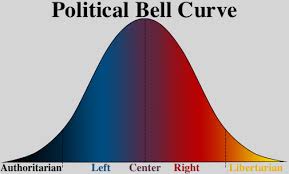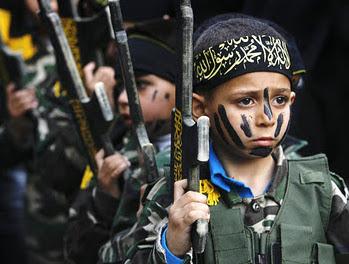A thought about Chanukah published by Religion News Service is here.


A thought about Chanukah published by Religion News Service is here.

A botanist named Joseph Banks who was aboard Captain James Cook’s 1770 voyage recorded in his diary that while the 106-foot-long Endeavour sailed along the east coast of Australia, native fishermen totally ignored the large boat, the likes of which they surely had never before seen.
Rashi (Beraishis 42:8) quotes the Gemara that explains the reason Yosef’s brothers didn’t recognize him when they appeared before him in his role as second in command of Egypt: They had last seen him as a teen and now he was a grown man with a full beard.
But Yosef, the Midrash says, looked just like his father Yaakov, whom the brothers knew as a grown man, if one considerably older than the Yosef facing them. And so, he must have resembled surely bearded Yaakov when his brothers came before him in Egypt.
Perhaps, though, there was another element at play here, too, the sort of cognitive dissonance that might explain the Australian aborigines’ lack of reaction to the sudden appearance of the large ship. It has been speculated that they had no model in their imaginations for a vessel like the Endeavour and so their minds blocked out what was before their eyes, rendering it, for all purposes, invisible.
The very last place Yosef’s brothers could have imagined him being was on a throne in a powerful country. They had left him in the hands of slave-traders and “knew” that he was, if he was even alive, toiling somewhere as a lowly servant. Might that “knowledge” have been at least part of why his face didn’t register with them, why they couldn’t see him even as he was right before their eyes?
Even in our times, we see the incredible power of assumptions and preconceptions, how blinding they can be. Even when faced with overwhelming evidence for the truth of something, whether a fair election or the need for a country to destroy an enemy pledged to its destruction, the fact can still remain for millions of people an unthinkable thought, and render what is right in front of them effectively invisible.
© 2025 Rabbi Avi Shafran

The Hebrew word for “mourning” is introduced in Vayeishev to describe Yaakov’s response to the apparent death of his son Yosef: “Vayis’abel (Beraishis 37:34).
The word “eivel” — “mourning” — is composed of the same letters, in the same order, as the word “aval” — “however.”
“However” bespeaks an interruption of a thought. And mourning — the facing of mortality forced by the death of someone close — is an interruption of life, of living, as we all do, without constantly thinking about death.
It’s interesting to note that the parsha includes not only the interruption of Yaakov’s life by Yosef’s disappearance – the source of his aveilus – but a striking interruption, too, of the narrative flow of the parsha itself, by the account of Yehudah and Tamar.
And that narrative also presents yet another interruption, this one, of Yehudah’s life. He is suddenly, unexpectedly, forced to confront the reality of his responsibility for the fact of Tamar’s pregnancy.
Tamar tells him, when he seeks to punish her, that he seems innocent and she seems guilty. But, she continues, please recognize these personal items… (38:25). That, for Yehudah, is an aval – a “however” – moment too.
© 2025 Rabbi Avi Shafran

The last time I recall seeing the “Nuremberg Defense” mentioned in the news was back in 1970, when I was in high school.
It has come up today in the context of a video message from Democratic lawmakers, reminding members of the military that they must refuse to obey illegal orders.
My thoughts on the matter are here.

Last week, New York mayor-elect Mandani not only demonstrated, once again, his hatred for Israel, but also lifted the hood on the engine of his animus: an abysmal ignorance of both history and law.
To read how, click here:

Yaakov famously sequestered Dinah his daughter in a box as he prepared to meet his brother Esav.
That, according to the Midrash Rabbah brought by Rashi (Beraishis 32:23). His reason for hiding Dinah, the Midrash notes, was because he feared that Esav, upon seeing her, would wish to marry her. And Yaakov didn’t want to take that chance.
There’s a phrase in the Midrash, though, that is easily overlooked but shouldn’t be. Not only did he put his daughter in a container, he “locked her in.”
What that seems to indicate is that Yaakov knew that, as Chazal explain at the very beginning of the saga of Dinah’s abduction and rape by Shechem, she was a yatzanis, an “outgoing personality.” She was a naturally curious person. And so, prudently, her father locked her in, since he feared she might emerge during his meeting with Esav to witness the goings-on and be targeted by her uncle.
And, according to the Midrash, Yaakov is faulted for that, since, had Dinah in fact been seen by Esav and ended up marrying him, she might have been able to turn his life around and alter the enmity he held in his heart for Yaakov.
But protecting children is a parent’s first priority. Wasn’t Yaakov right to do what he did?.
Apparently not. The question is why.
What occurs is that children have natural proclivities and tendencies. There are times, to be sure, indeed many times, when a child has to receive “no” as an answer.
But squelching a child’s nature is not a good idea. It can easily backfire. Ideal child rearing is channeling the child’s nature, not seeking to squelch it. (See Malbim on Chanoch lina’ar al pi darko in Mishlei 22:6).
My wife and I know a couple whose little boy seemed obsessed with airplanes, beyond the normal interest in such things shared by all little boys. The parents didn’t try to dissuade him from his desire, as he grew, to fly or work with planes, to force him, so to speak, into a box. They allowed him to express it, and the little boy is grown today, a yeshiva (and flight school) graduate who is a certified air traffic controller, and he’s raising a beautiful, Torah-centered family with his wife, our daughter.
© 2025 Rabbi Avi Shafran

I’m as chagrined as anyone about the ugliness we are witnessing on the extremes of both American political parties. But there have always been isolationists and bigots in Congress.
Does a respectable mainstream, at least presently, dominate in each party?
My take is here.

Some people’s default attitude in life is “I really deserve more than I have”; others are prone to feeling that “I really don’t deserve what I have.”
Most people fall somewhere on the spectrum between those two extremes, and most people also may experience one of the attitudes at some points; the other, at others.
Menachem Mendel of Kotzk, the Kotzker Rebbe, pointed out that, even though Jews are descended from 12 tribes, the sons of Yaakov, we are called Yehudim, after only one of those progenitors, Yehudah.
That, he contended, is because Jews are meant to embody the sentiment that yielded Yehudah his name – his mother Leah’s declaration at his birth that she was the beneficiary of what she “didn’t deserve.”
Since Yaakov had children from four women and Leah knew that her husband was destined to father 12 sons, she expected to bear only three. Yehudah was her fourth. And she acknowledged (“odeh,” the root of “Yehudah”) the fact that she had “received more than my share” (Beraishis 29:35; see Rashi).
Traditionally, the first words to leave a Jew’s mouth each morning upon awakening are “Modeh Ani” (or, for a woman, “Modah Ani”) — “I acknowledge.” The acknowledgment is for having woken up, for life itself. A Jew is meant to take nothing for granted, nothing. To take everything he has as a divine gift.
© 2025 Rabbi Avi Shafran

While the world watches to see whether the tunnel-ridden wasteland along the Mediterranean called Gaza can be restored to a livable place, what can’t be ignored is the most important part of the reconstruction effort: the rebooting of the Gazan mind.
To read more about that, click here.

Yaakov’s middah – defining characteristic – is emes, truth, and so Rashi parses Yaakov’s misleading words to Yitzchak to make them true on some level. For instance, allowing his father to believe it is Esav to whom he is speaking, Yaakov says “I am Esav your firstborn.” Rashi interjects a presumed pause in the sentence, rendering it “I am [the one bringing you food]; Esav is your firstborn” (Beraishis, 27:19).
Yet one misleading phrase still stands out: “Come eat of my hunted [food]” (ibid), says Yaakov, offering his father the goat meat he could mistake for game. But it was neither Yaakov’s food – his mother Rivka had prepared it – nor had it been “hunted.” How was Yaakov not lying?
What occurs is that “hunting” is a word we’ve seen earlier, in the Torah’s description of Nimrod: “a powerful hunter” (ibid 10:9). And there, Rashi explains that what Nimrod “hunted” and captured were people’s minds. He used words and subterfuge to mislead, convince and amass followers.
Perhaps here, too, Yaakov was subtly, slyly, subtly “confessing” to his father that he was engaged in a psychological subterfuge, presenting himself as someone he wasn’t, offering his “hunting” to Yitzchak, his ability to navigate a tricky and untrustworthy world. Thereby demonstrating that he, Yaakov, too, was capable of dealing with that challenging world no less than his brother, something that, as the Malbim and others explain, Yitzchak had assumed was not true.
And so Yaakov was saying, in effect, “Accept my current subterfuge as proof that I can do what you have assumed only Esav is able to do.”
© 2025 Rabbi Avi Shafran